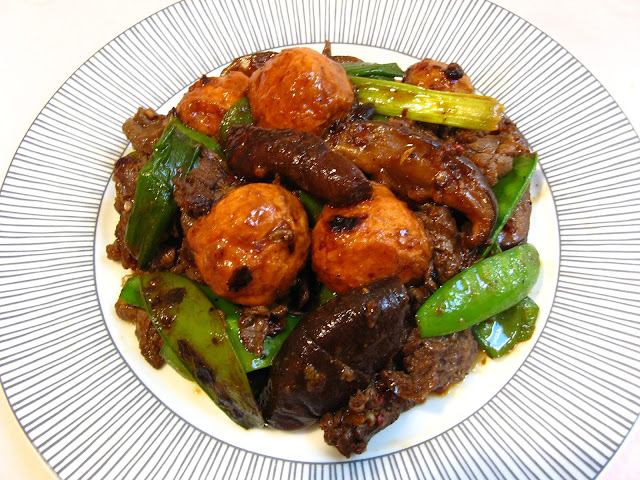Think of this dish as a Chinese stir fry version of surf and
turf. For those not native to North America, surf and turf refers to lobster
(surf) and steak (turf), usually broiled or barbequed, served together in one
dish, usually without vegetables. As is common in the USA, the lobster and
steak are the main ingredients and are large in quantity. The dish is usually
the most expensive seafood and steak combination dish on a restaurant’s menu.
So my stir fry version uses imitation lobster balls and
Shabu Shabu beef. Imitation lobster balls can be purchased at your local Asian
market and do not contain any lobster in them (they’re colored to make them
look like lobster). As far as I know, you cannot purchase true lobster balls,
since they would be prohibitively expensive. Shabu Shabu beef is thinly sliced
and can usually be purchased at your local Japanese or Asian market. Depending upon
the cut of meat used, the price can vary widely. The seafood and meat
combination is commonly used in Chinese dishes, so this recipe uses those
ingredients to give an Asian take on a favorite American dish.
Enjoy!

